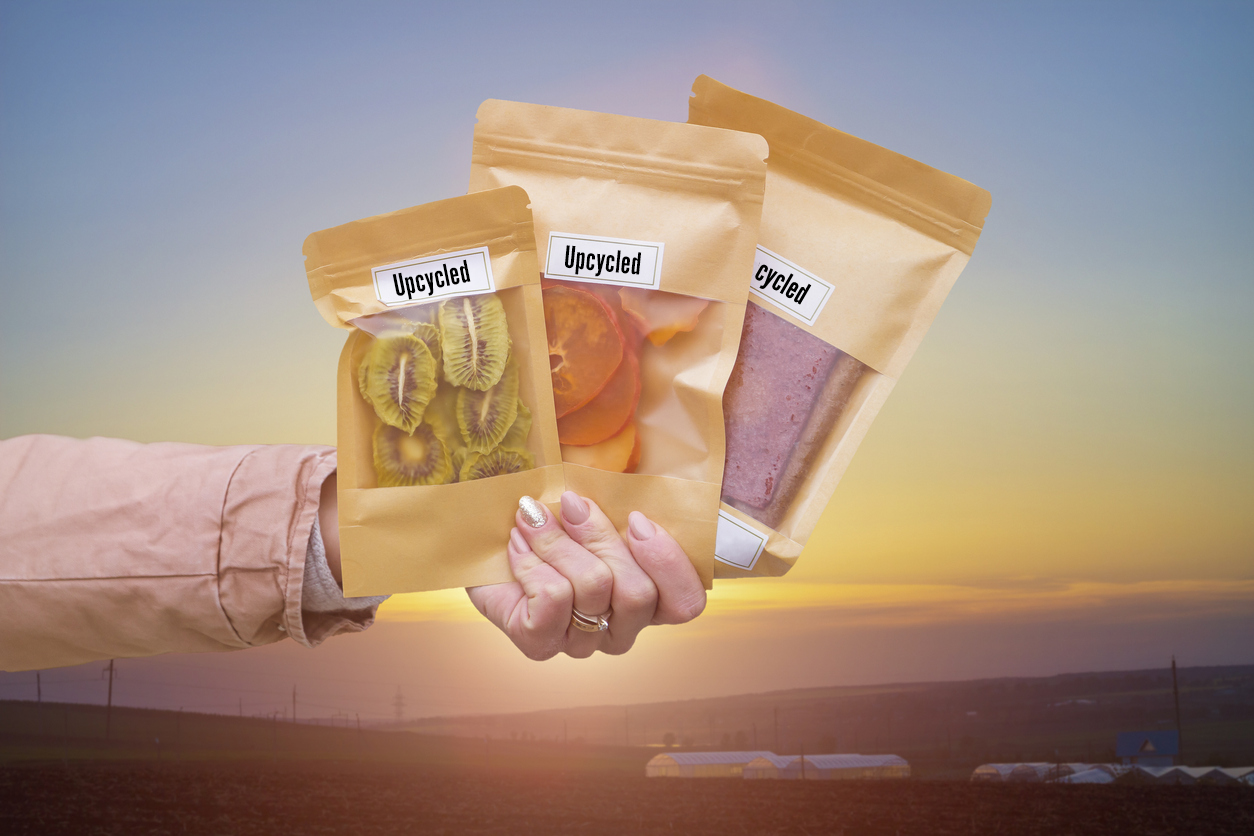Have you ever made bread crumbs out of stale bread, and used them for stuffing? If so, congratulations: You’re an upcycler! Ditto if you’ve turned overripe bananas into banana bread, or vegetable scraps into soup stock.
Your stuffing, banana bread, and soup may have been delicious, but did you also pat yourself on the back for being environmentally conscious and helping fight climate change? By keeping those items in your food supply, you didn’t have to buy more, and you kept them out of landfills.
While many environmental organizations focus on transportation and energy consumption as the main contributors to climate change, the US food system is actually one of the most significant drivers of greenhouse gas emissions. So anything you can do to reduce the carbon footprint of your diet (like eating less or no meat) is a win for the planet.
Upcycling can be simple if you’re doing it in your own kitchen, but it’s also happening at scale, in more and more industrial food settings. Many companies are releasing upcycled food products carrying environmental claims to address growing consumer concerns about planetary health. But upcycling is a fairly new term when applied to food, first gaining popularity in 2021, in the wake of increased concern for the planet that accompanied the COVID-19 pandemic.
So if you see an upcycled certification on a food item, does that mean you should buy it? Is upcycled food good for you or the planet, or just corporate greenwashing? And what are some ways to increase upcycling within your own home economics?
What Does Upcycled Food Mean?
Let’s start by defining the term. Upcycling basically means finding new, higher-value uses for items that would otherwise go to waste. It is distinct from recycling, which is when something is broken down into base materials and then turned into new products (like aluminum cans that are melted and go on to become new aluminum cans, or plastic bottles that become fleece fabric).
Examples of ingredients that can be upcycled include sub-grade produce (i.e., bruised apples, carrots that look like horror movie monsters, and misshapen tomatoes); scraps from food preparation (like onion skins and potato peels); and byproducts from food processing.
The first two categories are pretty straightforward. A tomato that’s too ugly to sell in a grocery store can still taste delicious in a sauce or on a frozen pizza. The Ugly Company turns misshapen fruit into “Hello, I’m Ugly” dried fruit snacks. And discarded scraps can be used as-is in formulations for soup and sauces. But what about byproducts? What do they consist of?
Think of food products that contain ingredients that come from plants — but aren’t the whole plant. For example, fruit juice comes from fruit but leaves behind fiber. Tofu is made from soybeans but consists of just curds. If you’ve ever made tofu at home, you’ve had to deal with (toss or repurpose) the remaining fiber-rich pulp, also known as okara.
So what happens to the parts of those raw ingredients that don’t make it into the product that ends up on the supermarket shelf? At worst, they become garbage in a landfill. At best, until recently, maybe they became compost for farms, ingredients for industrial processes, or feed for livestock.
But these remnants of food production can also live again as ingredients in upcycled foods. The pulp that remains when juice is pressed can add fiber to other foods. The okara left over from making tofu can be turned into veggie patties and other types of faux meat. Upcycling these byproducts can be a way to reduce food waste and help fight climate change by keeping food out of landfills.
What Does the Upcycled Certified Label Mean?
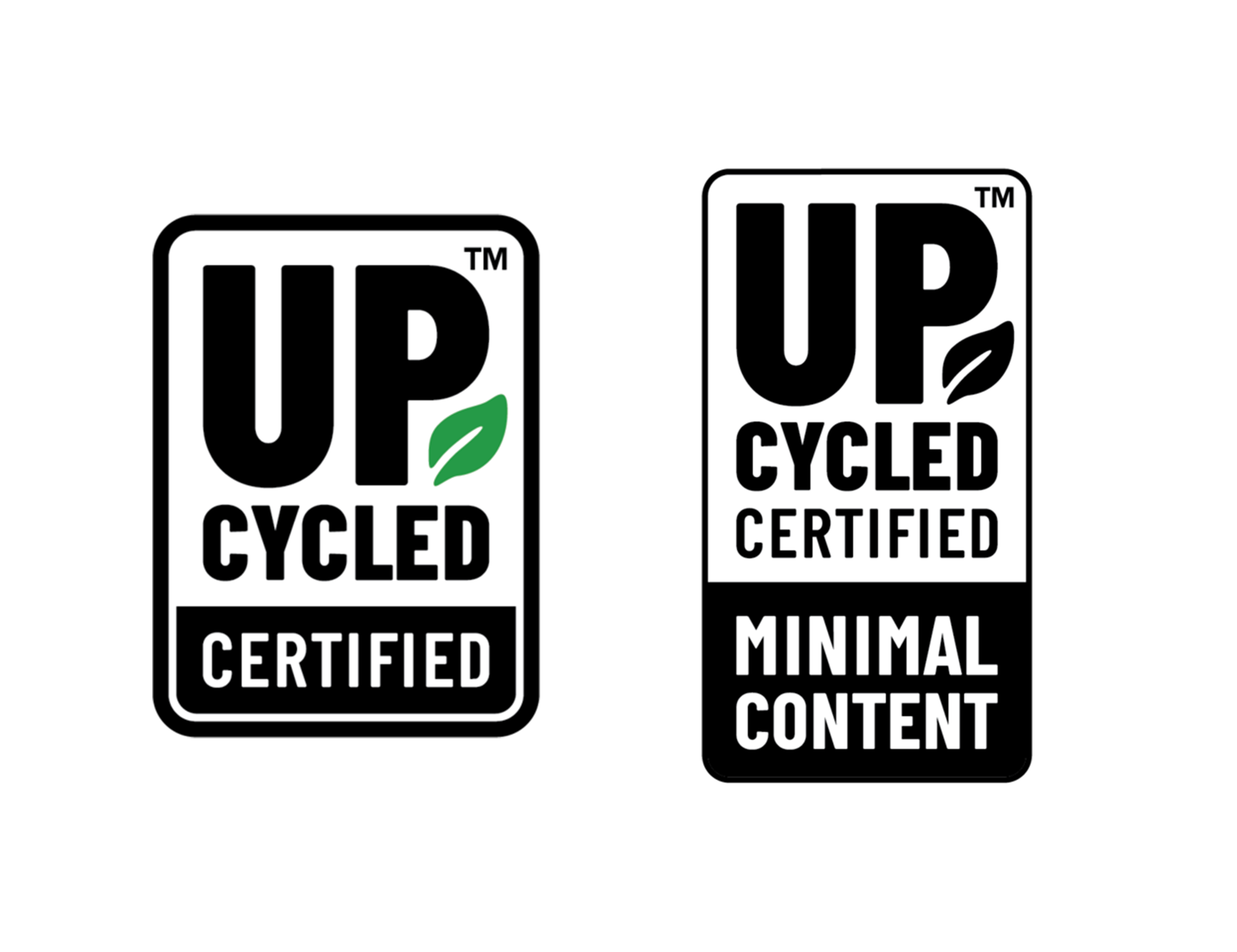
Driving this movement is the Upcycled Food Association and their Upcycled Food Certified label. They award this certification to food, beverage, and even personal care products that are made with upcycled food ingredients. As the label gains public awareness and acceptance, it’s hoped that consumers will embrace upcycled products by choosing them instead of non-upcycled competitors.
Currently, there are three Upcycled Certified types: Ingredient, Product, and Minimal Content. The “Upcycled Ingredients” label is reserved for ingredients that would otherwise not have gone to human use or consumption, and consist of at least 95% upcycled inputs. You probably won’t see this certification on a consumer product; rather, companies sell these certified ingredients to other companies to use in new products.
An example of a certified upcycled ingredient is FruitSmart, which consists of upcycled fruit juices, purees, concentrates, essences, fibers, seeds, seed oils, and seed powders. Another is SunOpta (these companies apparently like sticking capital letters in the middle of their names), which makes a powered oat protein ingredient called OatGold from byproducts of oat milk production.
Once a product hits the market, it may be eligible for one of the other two upcycled certified labels: Product and Minimal Content. Foods, menu items, beverages, supplements, and pet foods, as well as cosmetic, personal care, and household cleaning products can wear the Upcycled Certified Product label if at least 10% of their ingredients are upcycled.
You can tell which ingredients have been upcycled because they will either be asterisked as upcycled (Bananas*) or described as such (“upcycled bananas”) in the ingredients list.
Upcycled food examples include Chia Smash, a jam made with superfoods and upcycled fruits, and snack foods like Organic Banana Nubbins and Unsweetened Dried Mango sold by Imperfect Foods, using produce that would otherwise have gone to waste.
The third certification type, Minimal Content, indicates products with upcycled ingredient content of less than 10%.
Is Upcycled Food Sustainable?
So that all sounds great in theory — but does it work? Is upcycled food truly sustainable? Well, of course, it matters to look at the company it keeps. If a product was, say, 10% upcycled broccoli sprouts, 45% high fructose corn syrup, and 45% hydrogenated lard, and it was shipped in a big styrofoam cooler, then with all due respect to broccoli sprouts, you’d still have a hard time convincing me that the result was either sustainable or healthy. But, in general, there are several reasons to think that upcycling might be a big improvement over the system as it currently operates.
First, organic matter in landfills releases potent greenhouse gasses, including methane. Keeping these food ingredients out of landfills means that we’re recycling the carbon they contain, which can help mitigate climate chaos. In the US, at least eight states have laws requiring some reprocessing of food waste.
Second, food that’s upcycled replaces new food that would have to be grown, shipped, and processed. Decreasing food waste decreases resource waste, including inefficient use of land and water, and reduces carbon emissions from growing, transporting, and disposing of food. Upcycling can allow our food system to get “more” out of “less” by creating two or more products out of resources that formerly produced just one.
Third, those thrown-away foods are often full of nutrients. Upcycling can harness the nutritional value of by-products that would otherwise have gone to waste.
The upcycled food certification process is still in its infancy, so it’s hard to say what the true impact is on cutting emissions or reducing food waste. However, the Food and Agriculture Organization of the United Nations concluded that if food waste were its own country (can you imagine how hard it would be for their tourist industry to attract visitors?), it would be the third-largest emitter of greenhouse gasses.
While buying upcycled products can contribute to reducing food waste or combating climate chaos, it’s certainly not the only way, or even the most impactful, to make a positive difference in the world. In fact, the single biggest step you can take toward that goal is to adopt a more plant-based diet. That’s a powerful way to free up more food for a hungry world and reduce greenhouse gas emissions.
Is Upcycled Food Safe — or Healthy?
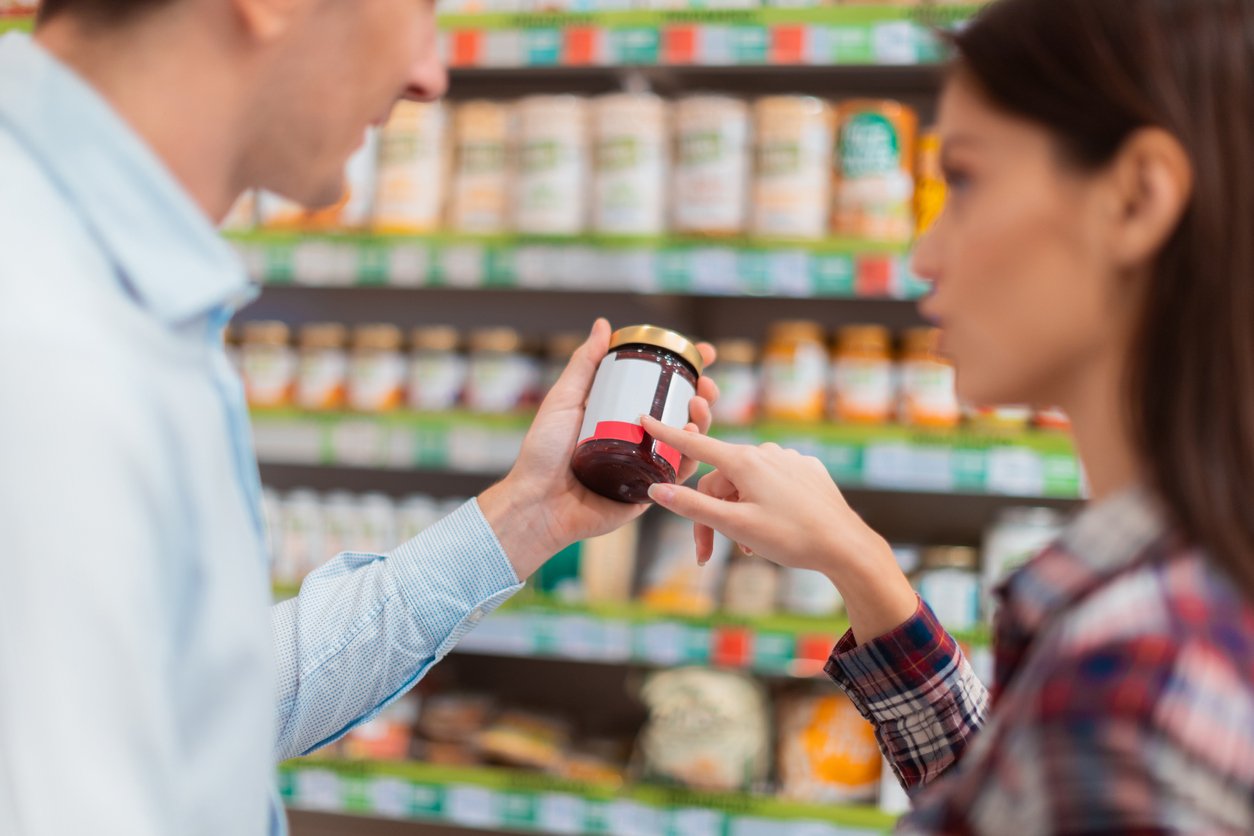
Whether upcycled food is good for the planet is separate from another issue that might be on your mind — is it safe to eat? Since upcycled food isn’t necessarily food that would have gone to human consumption, it’s natural to wonder if it’s safe. And if it’s technically safe, is it healthy?
In terms of safety, upcycled certified foods should be fine. The Upcycled Certified label has premarket approval by the Food Safety and Inspection Service (FSIS) of the US Department of Agriculture. The FSIS provides labeling ingredients guidance and inspection methods to protect consumers from misbranding and unsafe food.
The FSIS also requires a third-party supply chain audit to ensure that foods come from a verified source. In this case, verification is performed by Where Food Comes From, which also certifies products for the Non-GMO Project, among others.
So safety, check.
But what about health? The upcycled label has nothing to say about that. It doesn’t indicate that ingredients are organic, non-GMO, or pesticide-free (although it doesn’t preclude those attributes either). Many upcycled foods are also processed foods with unhealthy ingredients like refined sugar, natural flavors, and so on. Some upcycled foods may use upcycled animal products, like Blue Circle, which makes fish-shaped fish sticks out of upcycled salmon.
While a certified upcycled label may be an indicator of sustainability, it’s still important to read the Nutrition Facts and ingredient labels before purchasing these (or any other) foods.
How to Upcycle Food at Home
As we saw at the beginning of this article, whether you choose to purchase Upcycled Certified foods or not, you can take inspiration from the movement by upcycling your own food at home. Here’s our article on tips and tricks for utilizing food scraps.
And, here are some recipes that will make efficient and delicious use of some of the cooking byproducts you might have been wondering what to do with.
Upcycled Food Recipes
Have you ever been curious about what to do with leftover veggie pulp? What about peels, stems, and various plant scraps? We have an eco-friendly and nourishing solution — become an upcycled food master and harness every last bit of plant power with these simple and tasty no-waste recipes!
1. Nut Milk Pulp Granola

Nut Milk Pulp Granola is plenty crunchy, naturally sweet, and spiced with fragrant cinnamon that creates an enticingly nutty aroma (and flavor) while it bakes in the oven. This no-waste recipe is a tasty and nutritious way to use up leftover pulp from homemade almond or other nut milks. And not only is it no-waste, but there are lots of ways to customize it (check the Chef’s Notes!).
2. Dehydrated Juice Pulp Crackers
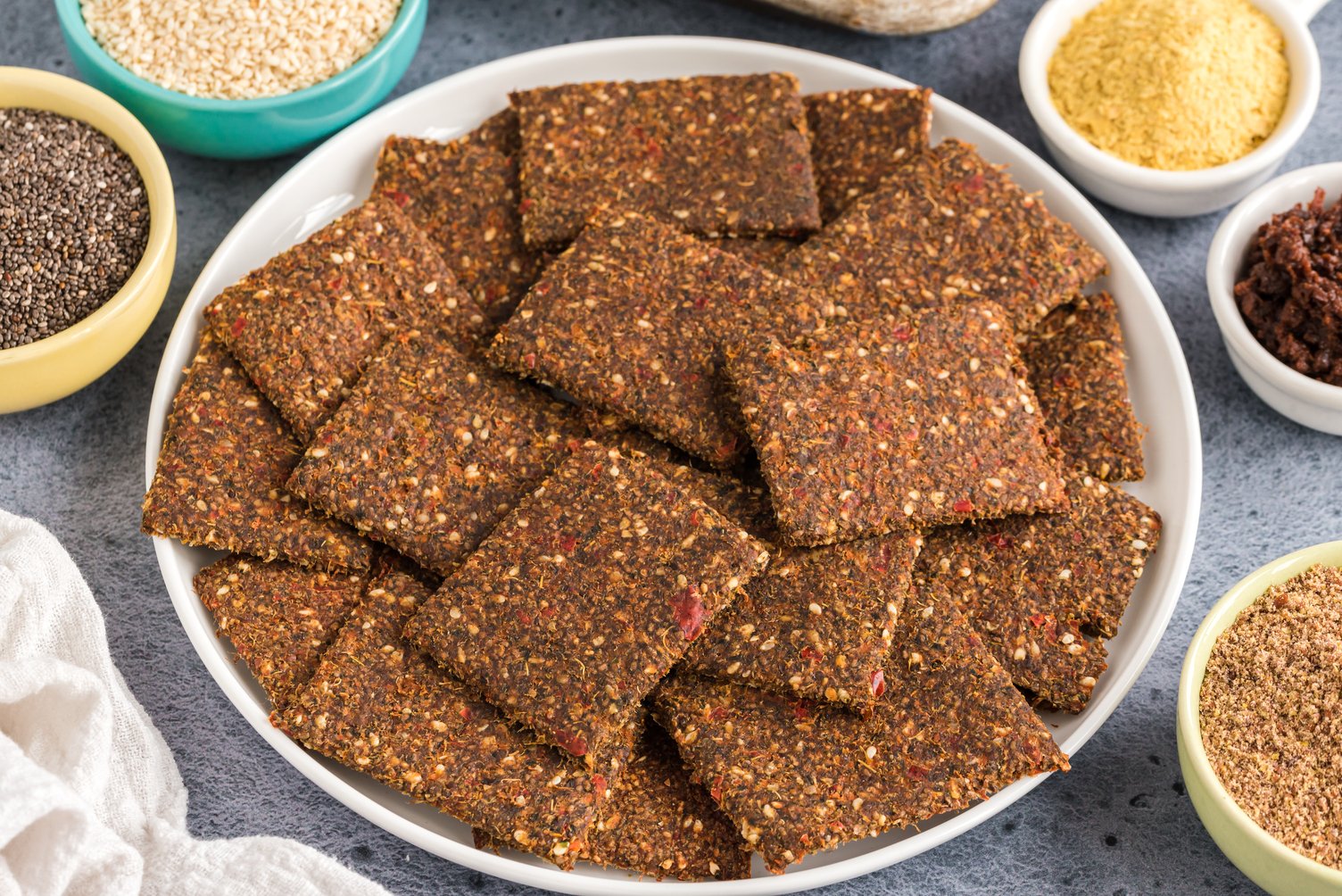
Curious what to do with all that leftover veggie pulp after making a big, delicious batch of fresh veggie juice? Our suggestion — make crunchy and tasty Dehydrated Juice Pulp Crackers! Complete with wholesome plant-based nutrition, lots of fiber, and a savory umami flavor, these crackers are a perfect solution to your food scrap conundrum. Plus, they make a fun (and nourishing) vehicle to scoop up a variety of scrumptious plant-based dips!
3. Veggie Scrap Bouillon
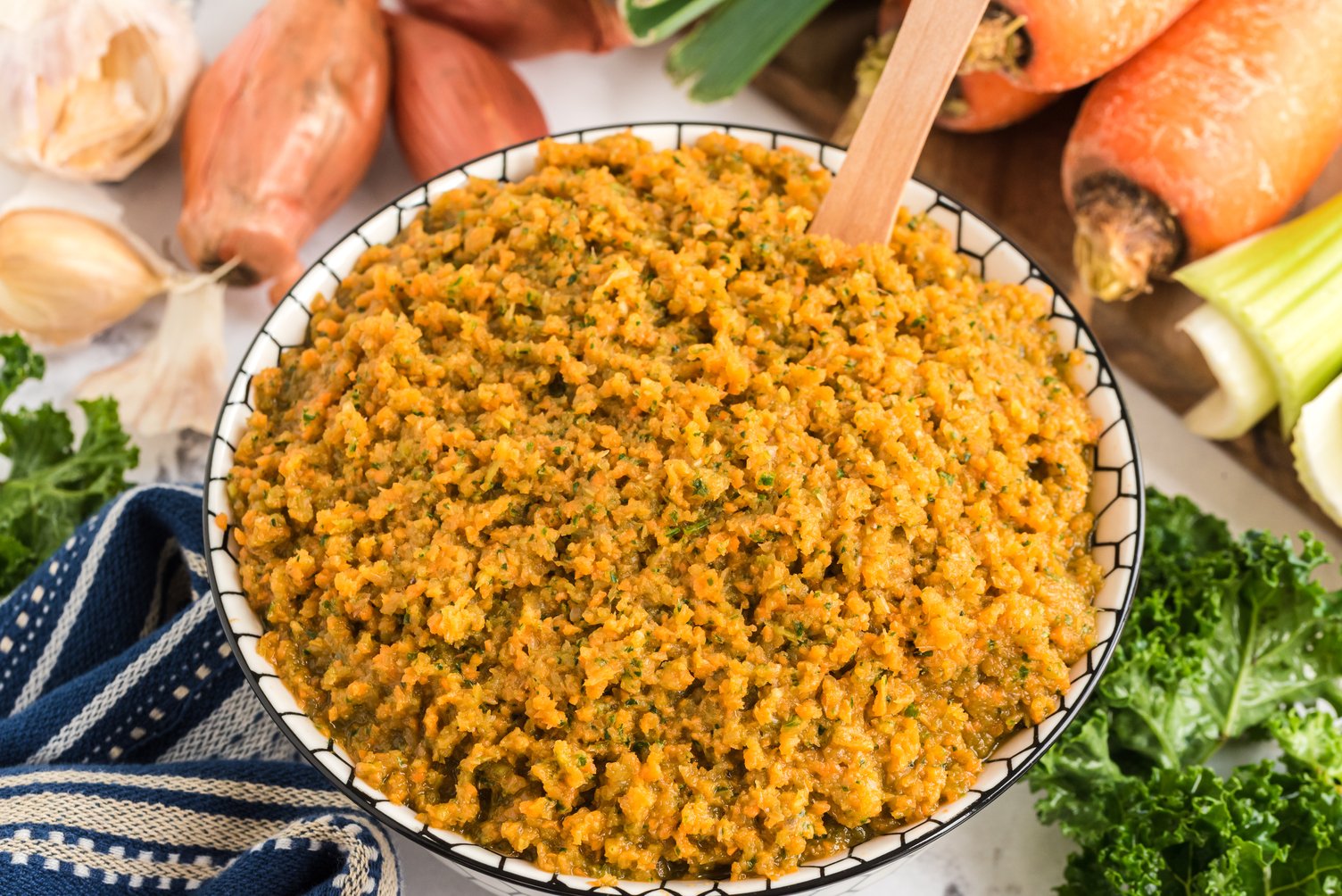
Turn veggie peelings, ends, and pieces into something amazing with this nutrient- and fiber-rich Veggie Scrap Bouillon. This easy-to-make recipe requires just a handful of ingredients and a food processor to transform vegetable scraps into a whole-food veggie paste that is ideal for adding concentrated and robust veggie flavor (plus plenty of fiber!) to any dish where you’d use vegetable broth.
Upcycling Food Is a Positive!
Upcycled food is an emerging trend in the food industry — and a step towards being more environmentally responsible. The upcycled certification label is a way for consumers to identify brands that are committed to reducing food waste and helping to mitigate climate chaos. But Upcycled Certified foods don’t necessarily equal healthy foods. And buying processed foods with upcycled ingredients isn’t the only way to put a dent in food waste. You can also take inspiration from the movement and upcycle your own food at home with minimal processing. And if you want to walk lighter on the Earth, one of the simplest steps you can take is to base your diet around whole plant foods. Whether they’re upcycled or not, that can be a great way to reduce your environmental footprint, and be part of the solution.
Tell us in the comments:
- Are you already upcycling in your kitchen (even though you might not have known the term before)? If so, what are you doing?
- Have you begun seeing Upcycled Certified products on store shelves? Have you tried any?
- What’s one thing you might start upcycling at home?
Featured Image: iStock.com/Iuri Gagarin
